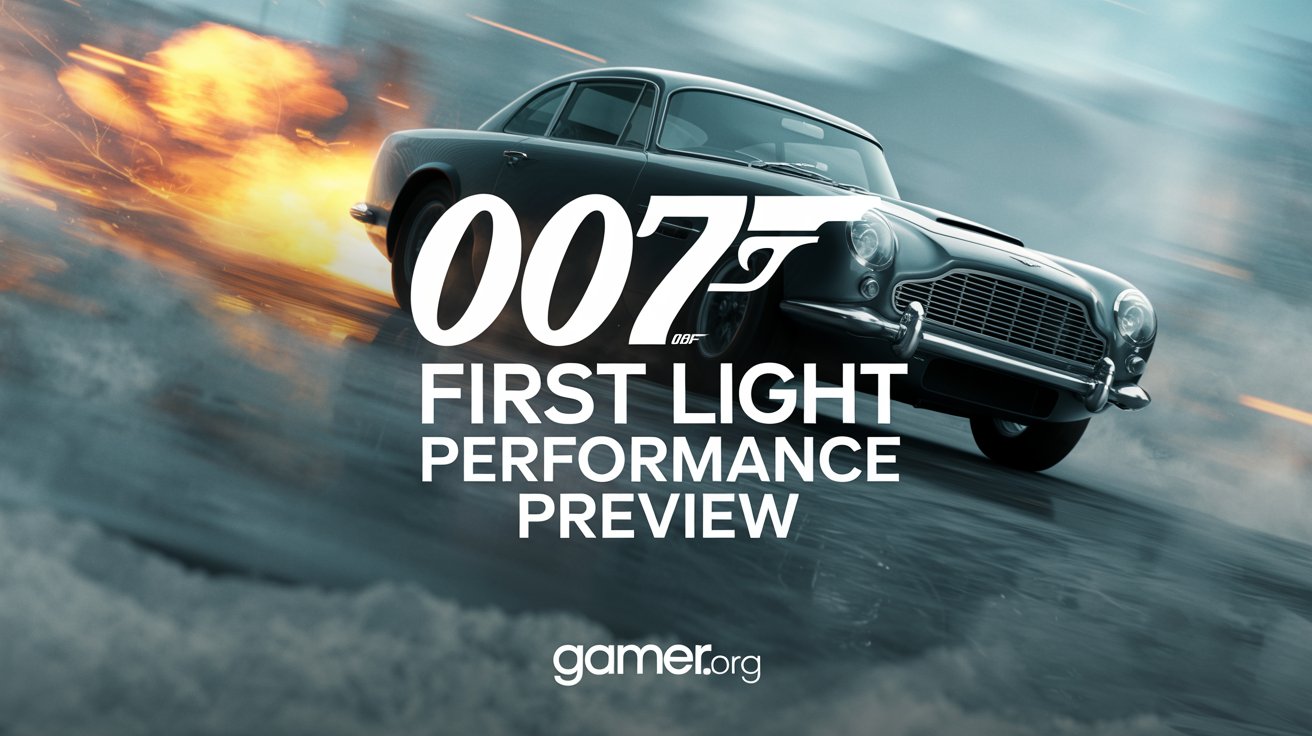007 First Light Performance Preview: IO Interactive’s Gameplay Reveal

007 First Light has finally been revealed after months of silence, and the latest gameplay showcase highlights IO Interactive’s bold vision for the next Bond. Using the Glacia engine, this reboot mixes stealth, stylish action, destructible environments, and cinematic set pieces to create a younger Bond ready to redefine the franchise. The extended reveal during PlayStation’s State of Play gives an early look at visuals, mechanics, and, most importantly, 007 First Light performance on next-gen hardware.
Glacia Engine Powers 007 First Light Performance
At the core of 007 First Light is IO Interactive’s proprietary Glacia engine, known for powering the Hitman series. However, this Bond title pushes the engine further, introducing cinematic driving sequences, advanced melee animations, and destructible environments.
Compared to Hitman 3 (2021), which ran at 60fps, the preview build locks the game to 30fps across both gameplay and real-time cinematics. Visual upgrades are striking: improved character models, richer lighting, and seamless transitions between stealth and action. Glacia’s ragdoll physics, cloth simulation, and inverse kinematics return but are expanded for Bond’s dynamic traversal, fast-paced chases, and larger crowds.
Visual Fidelity, Ray Tracing, and Hardware Stress
During the State of Play showcase, IO demonstrated a mix of photorealistic environments and fast-paced sequences that test both the engine and console hardware. On PS5, 007 First Light currently:
Targets 30fps in this preview build
Uses dynamic resolution scaling around 2560×1440
Implements ray tracing selectively, alongside screen-space reflections (SSR) and planar proxies
Renders dense environments, cinematic crowds, and detailed interiors without noticeable artifacting in most sequences
However, reflections on metallic objects, like Bond’s car handles, occasionally fail to capture nearby interactions. This suggests ray tracing is applied to limited surfaces, balancing visual fidelity and performance.
Action Set Pieces Push Performance Limits
The most revealing moments in the gameplay showcase come during high-intensity set pieces. Bond infiltrates crowded parties, escapes burning mansions, and engages in large-scale shootouts — all while leveraging physics-driven destruction. Here, 007 First Light performance dips noticeably as explosions, collapsing structures, and AI-driven sequences pile stress on CPU and memory bandwidth.
Certain gameplay sections drop into 50–70ms frame times, occasionally hitting ~100ms when multiple destruction triggers fire simultaneously. IO has several months to optimize before launch, and early indications suggest a focus on memory management, GPU load balancing, and smarter physics handling to improve stability on PS5 and Xbox Series X|S.
State of Play presents 007 First Light gameplay deep dive on September 3
byu/Turbostrider27 inGames
Launch Window and Optimization Goals
IO Interactive confirmed that 007 First Light will release in March 2026 on PS5, Xbox Series X|S, PC, and Switch 2. While this preview build highlights areas for refinement, the ambition behind its cinematic pacing, destructibility, and stealth-action balance is evident.
The developers have time to refine streaming systems, improve AI crowd performance, and stabilize the frame rate — especially in intense sequences. Given IO’s track record with Hitman’s engine optimizations, expectations remain high for a smoother experience at launch without sacrificing visual spectacle.













